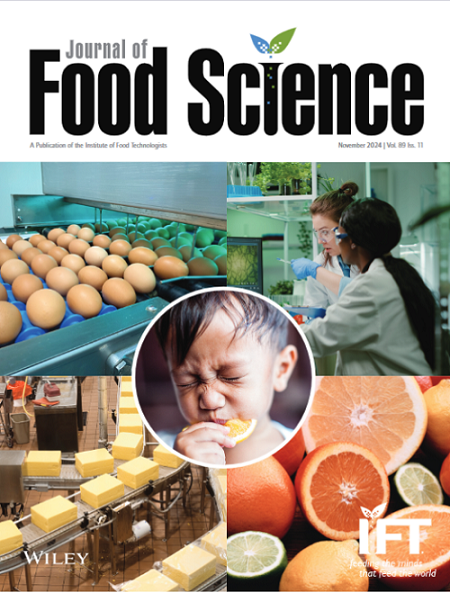Characterization of Volatile Organic Compounds in Citrus-Flavored Sesame, Palm, and Coconut Oils Using Gas Chromatography–Mass Spectrometry and Multivariate Analysis
Abstract
ABSTRACT
The incorporation of citrus-based flavoring agents into vegetable oils has gained increasing attention because of their potential to enhance both the sensory and functional qualities. In this study, the aroma profiles of sesame, palm, and coconut oils flavored with three tropical citrus species, Kaffir lime (Citrus hystrix), Key lime (Citrus aurantifolia), and Nasnaran (Citrus amblycarpa), were investigated. Citrus-flavored vegetable oils were prepared by blending various concentrations of fresh citrus slices (60%, 100%, and 140% w/v) with oils. Volatile organic compounds of the citrus-flavored oils were analyzed using headspace gas chromatography–mass spectrometry. Monoterpene hydrocarbons, particularly limonene, β-pinene, and β-thujene, dominated the profiles (95.91%–99.88%), with Kaffir lime and Nasnaran contributing richer and more complex aroma profiles compared to Key lime. Coconut oil yielded the highest proportion of monoterpene hydrocarbons (ca. 99%), with minimal levels of other volatiles, which may be related to its medium-chain saturated fatty acid content. In contrast, the other oils displayed greater chemical diversity, including esters, ketones, and pyrazines. Multivariate evaluations, such as hierarchical clustering and principal component analysis, demonstrated that the citrus type was the primary driver of volatile differentiation, surpassing the oil matrix and citrus concentration effects. Additionally, partial least squares–discriminant analysis highlighted ocimenes as key volatile markers responsible for volatile discrimination across oil types (VIP = 1.57–2.17). These findings underscore the importance of selecting appropriate citrus varieties and concentrations to differentiate volatile profiles of citrus-flavored vegetable oils, provide novel insights into potent aroma–matrix interactions, and support the development of customized, naturally flavored oils for culinary and functional applications.
Practical Applications
Edible oils, such as sesame, palm, and coconut, can be utilized to extract volatile organic compounds from citrus fruits, resulting in citrus-flavored vegetable oils with distinctive aroma profiles. The outcomes of this research can benefit both food producers and consumers looking for flavor-enhanced, locally sourced vegetable oils.


 求助内容:
求助内容: 应助结果提醒方式:
应助结果提醒方式:


